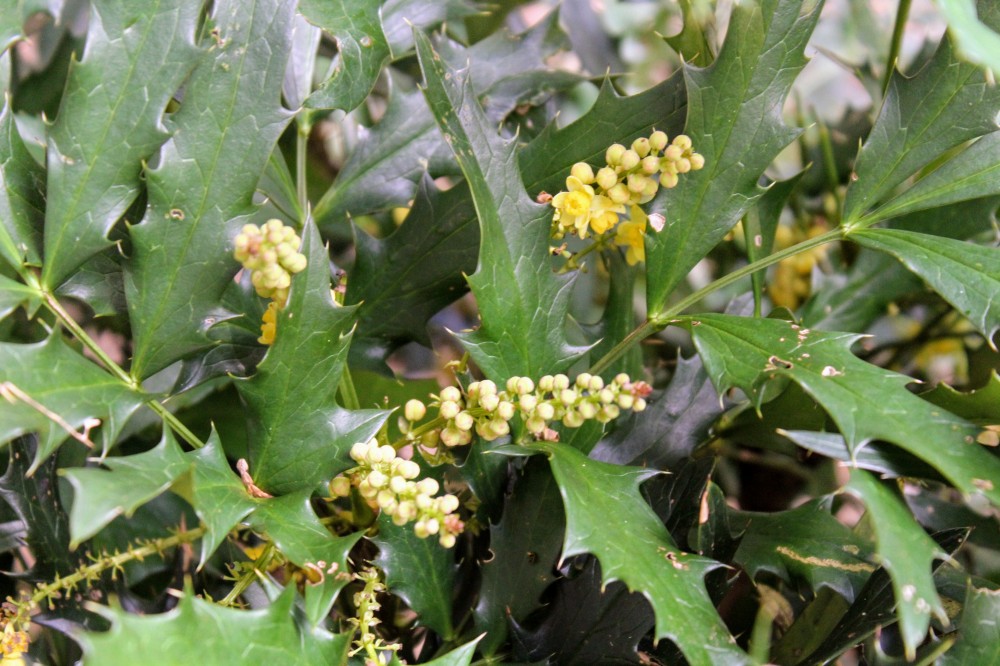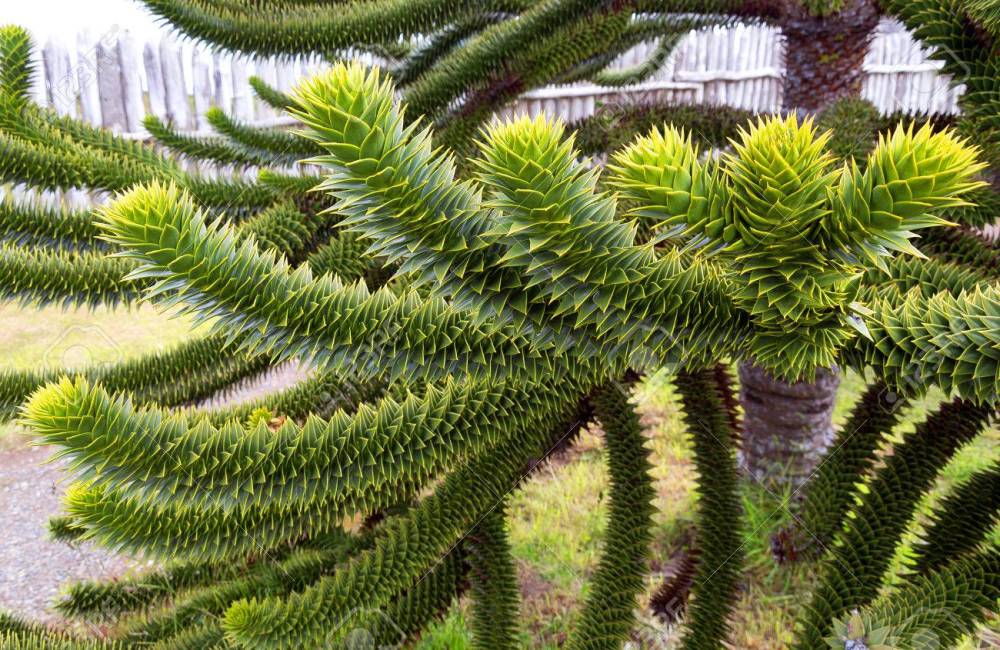Unsurprisingly, leaves of three of four ‘Beijing Beauty’ mahonias (below) are brown and brittle following a winter when multiple nights dropped to zero, and possibly a degree or two colder. The fourth, nearest and evidently protected by the house, shows no sign of winter injury.
While the parentage of ‘Beijing Beauty’ is unclear, suspicions seem confirmed that the mahonias derive from similar shrubs (‘Soft Caress’ and narrow leaf mahonias) that perished in recent winters. Though confirmation of the the mahonias’ failure to survive is weeks away, the process to consider possible replacements has begun.
Another newly planted mahonia, ‘Marvel’, appears very similar to ‘Winter Sun’ (Mahonia x media, above) and other late autumn flowering hybrid mahonias, though with notably fewer spines. Despite planting late in the season, ‘Marvel’ survived the winter with only minor damage. Other hybrid mahonias show mixed results with some minor damage, or none at all.
Leatherleaf mahonia (Mahonia bealei, below) is long established in the garden, and through recent winters with multiple nights falling to five below zero no winter injury was seen. While flowering time varies, even to mid January in mild winters, leatherleaf began flowering this year at the more typical start of March. The gardener should be warned that grape-like fruits that follow flowering are quickly devoured by birds, and seedlings of leatherleaf mahonia are common. In some areas it is judged to be invasive, though I have seen no evidence that it spreads to this extent. 
In mid February, ‘Underway’ mahonia was dug through a crust of frozen ground to be transplanted to an expansion of a planting bed in the rear garden. It had been squeezed into a spot behind a wide spreading paperbush and an abelia, and while it grew vigorously, the location was too shaded for flowering. While it is too early to be certain, the move appears successful, though a number of scrapes and scratches resulted from the mahonia’s spiny leaves. Once, for novelty I planted a Monkey Puzzle (Araucaria araucana, above), which unfortunately survived only a few years in the heat and humidity of Virginia. I can attest that the only plant with more vicious spines than Monkey Puzzle is a dead Monkey Puzzle, which was removed with more than a little loss of blood. Mahonias, live or dead, run a close second, so I am hesitant to experiment much with ones that are of questionable hardiness.
Once, for novelty I planted a Monkey Puzzle (Araucaria araucana, above), which unfortunately survived only a few years in the heat and humidity of Virginia. I can attest that the only plant with more vicious spines than Monkey Puzzle is a dead Monkey Puzzle, which was removed with more than a little loss of blood. Mahonias, live or dead, run a close second, so I am hesitant to experiment much with ones that are of questionable hardiness.
There is not much that can hurt a mahonia. I thought that they were tolerant of cold as far north as Portland and even Seattle. I have never seen one get frosted, but I have not worked with them in cooler climates.
There was a huge monkey puzzle tree in Sunnyvale, right on Sunnyvale Avenue. It is now gone. I sometimes wonder how it was removed.
Despite a more southern latitude, northern Virginia is much colder in winter than Seattle and Portland. I travel to the Portland area each year to visit growers that we ship from spring and fall, so I watch winter weather and I know there’s great concern when temperatures drop into the teens. My concern with mahonias is when we regularly drop to zero or below.
As for the monkey puzzle, I can assure you that it was removed with great care. The spines will pierce heavy leather gloves.
The bunya bunya is more common here. It is very difficult to handle. I really do not know how arborists work with them. The monkey puzzle tree is the worst! I can not imagine it being nastier than the bunya bunya, but it is.